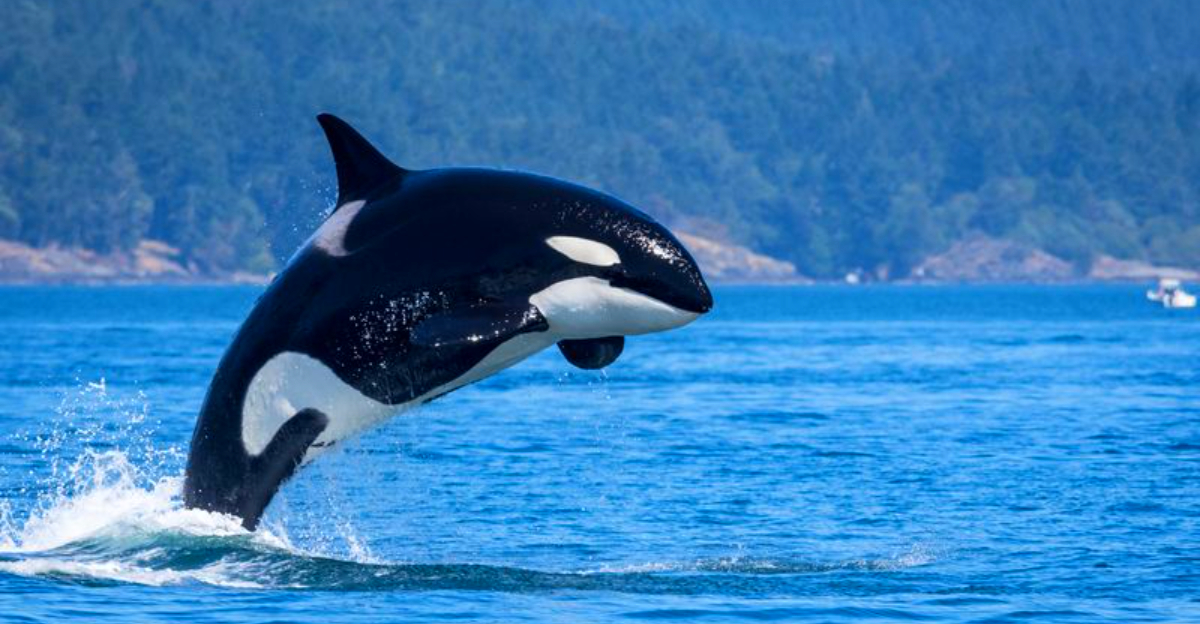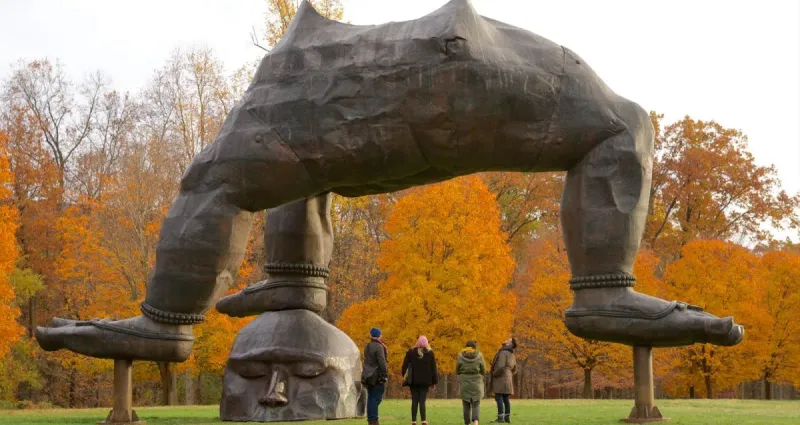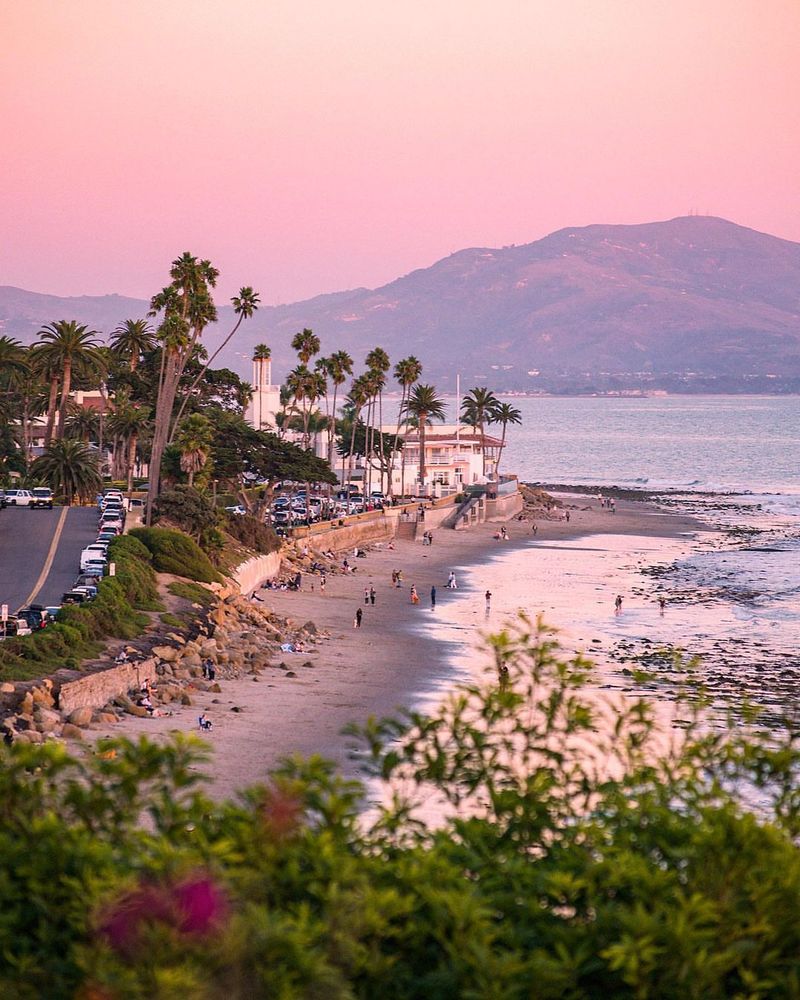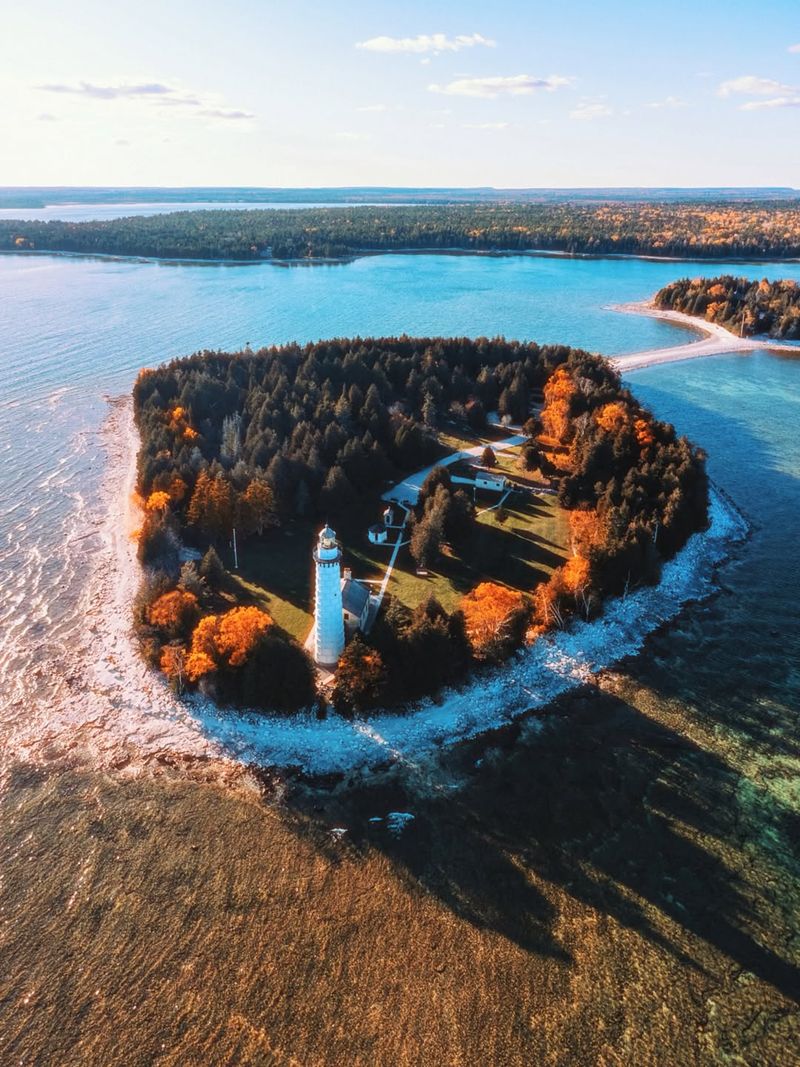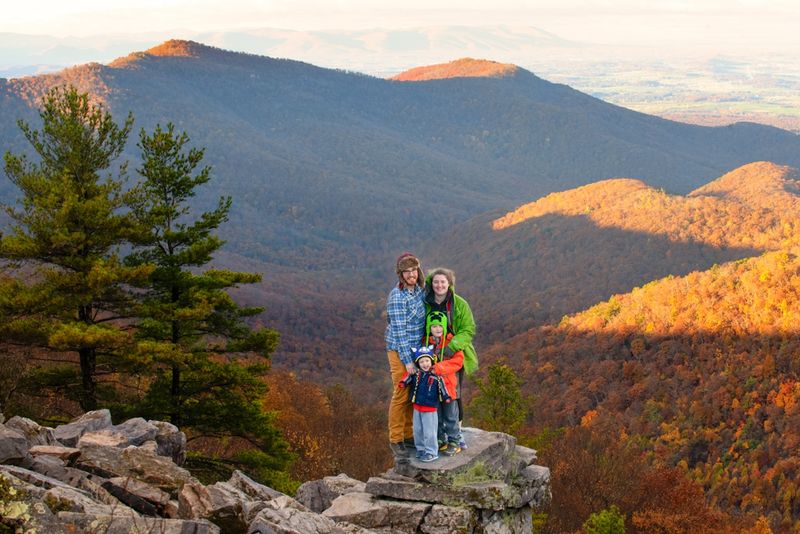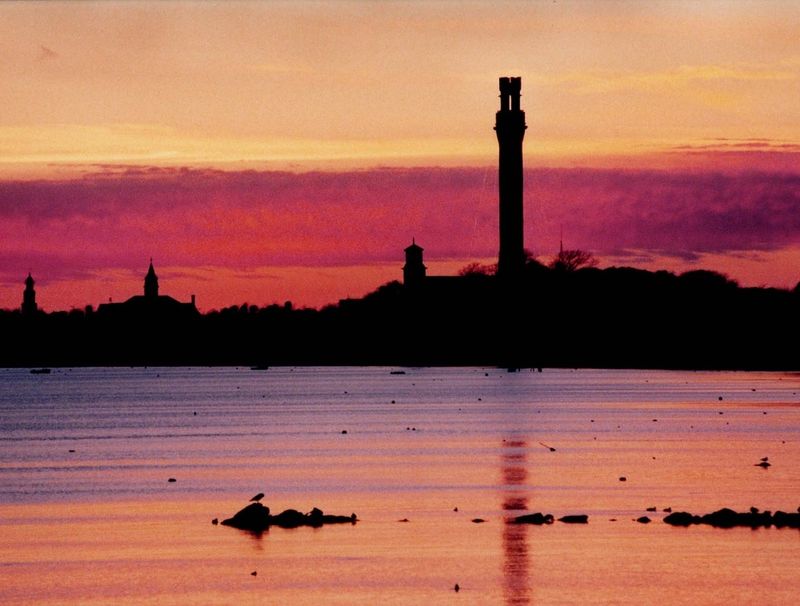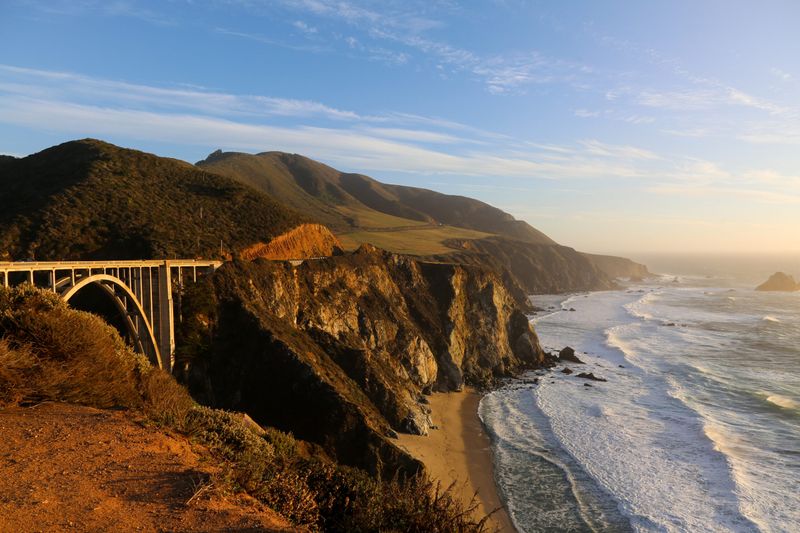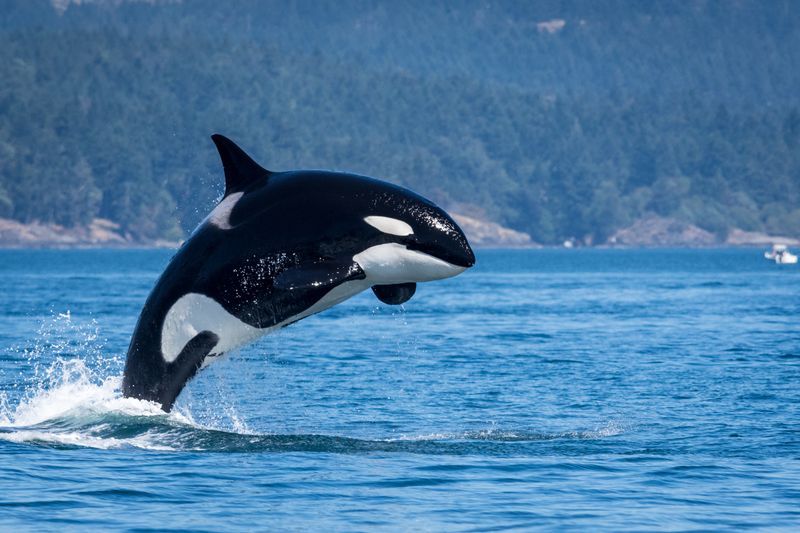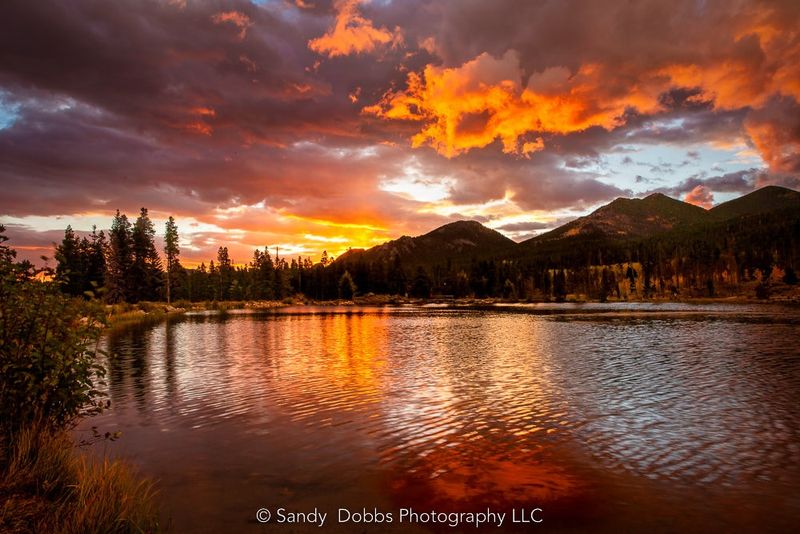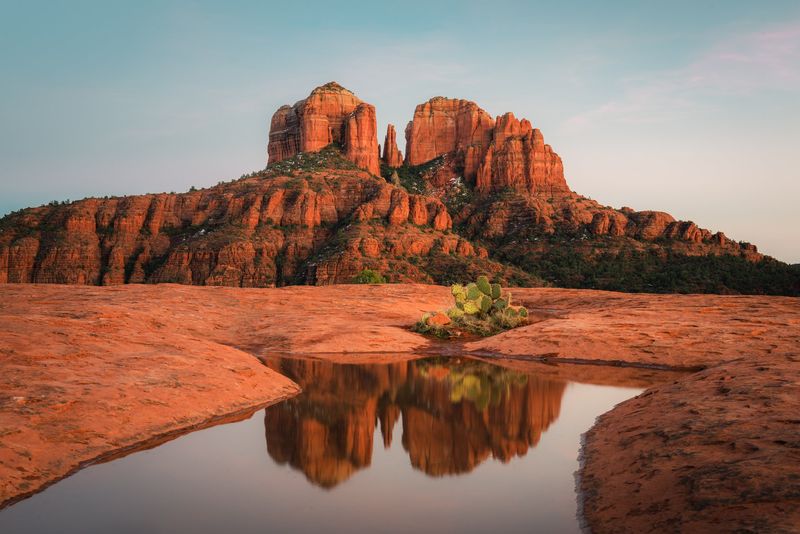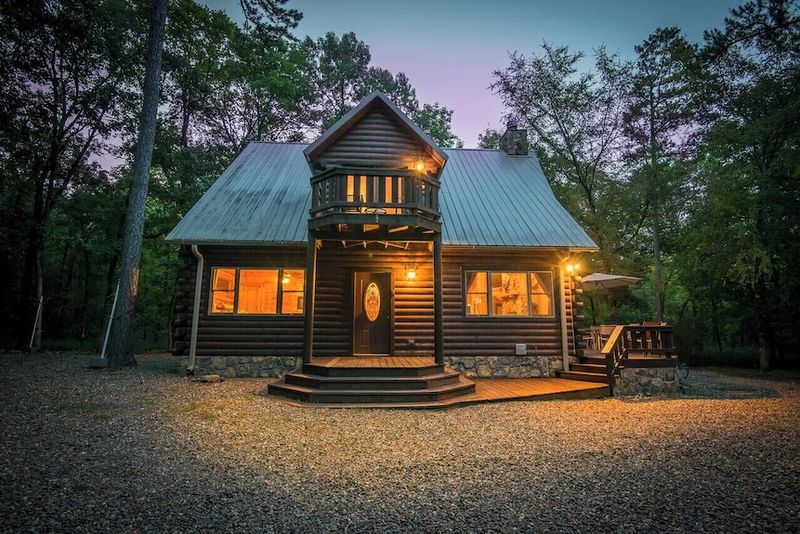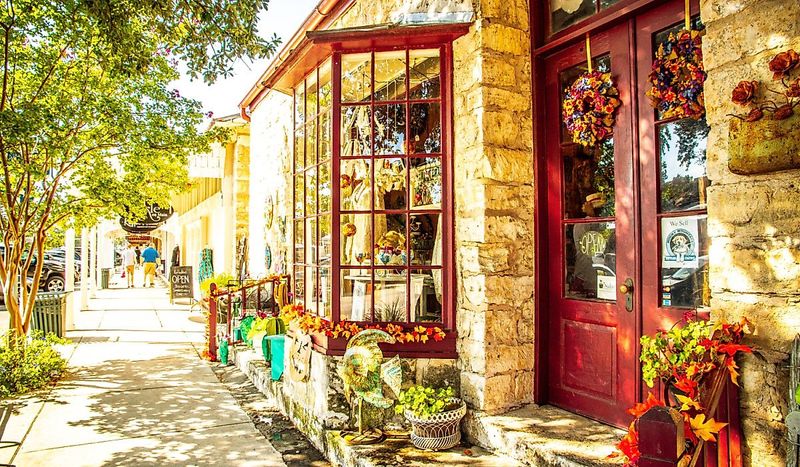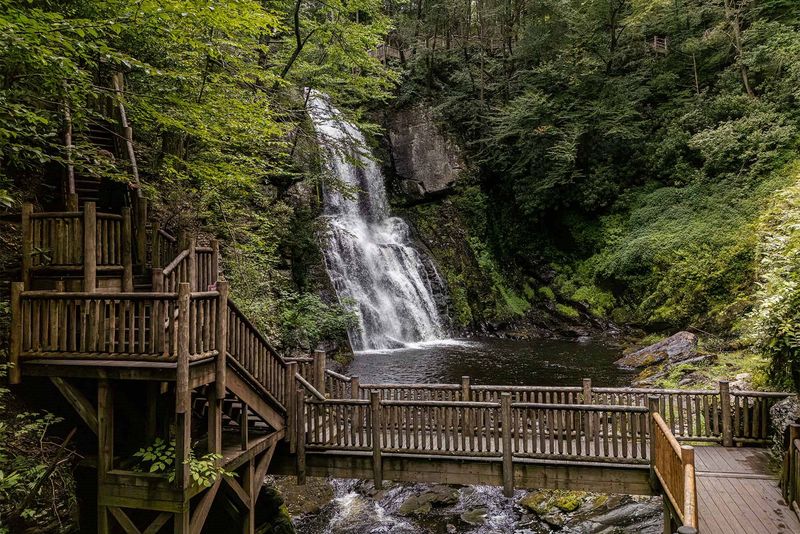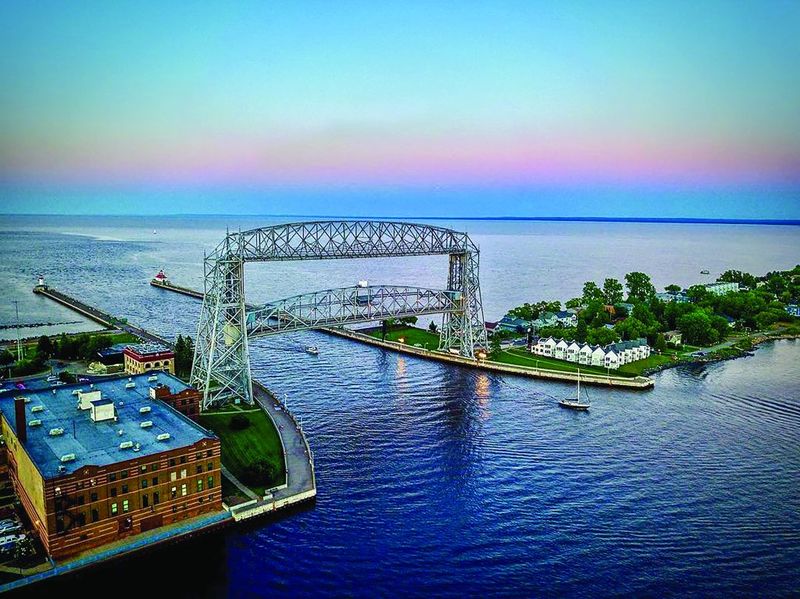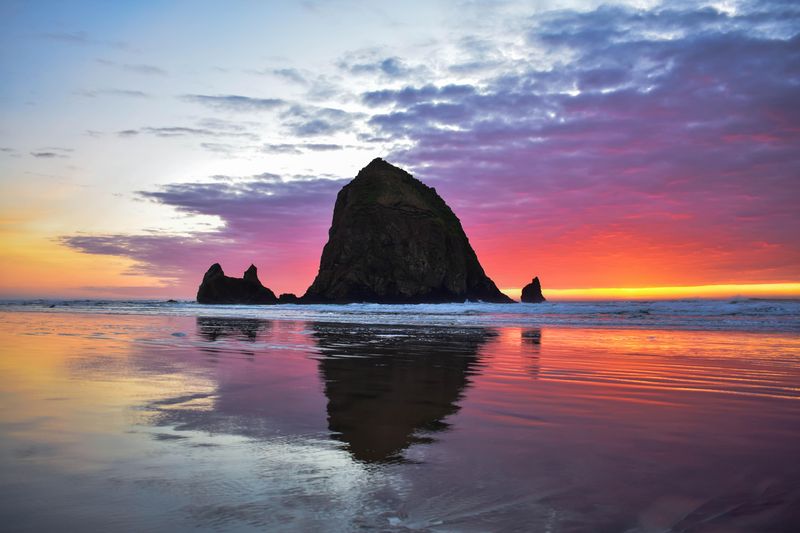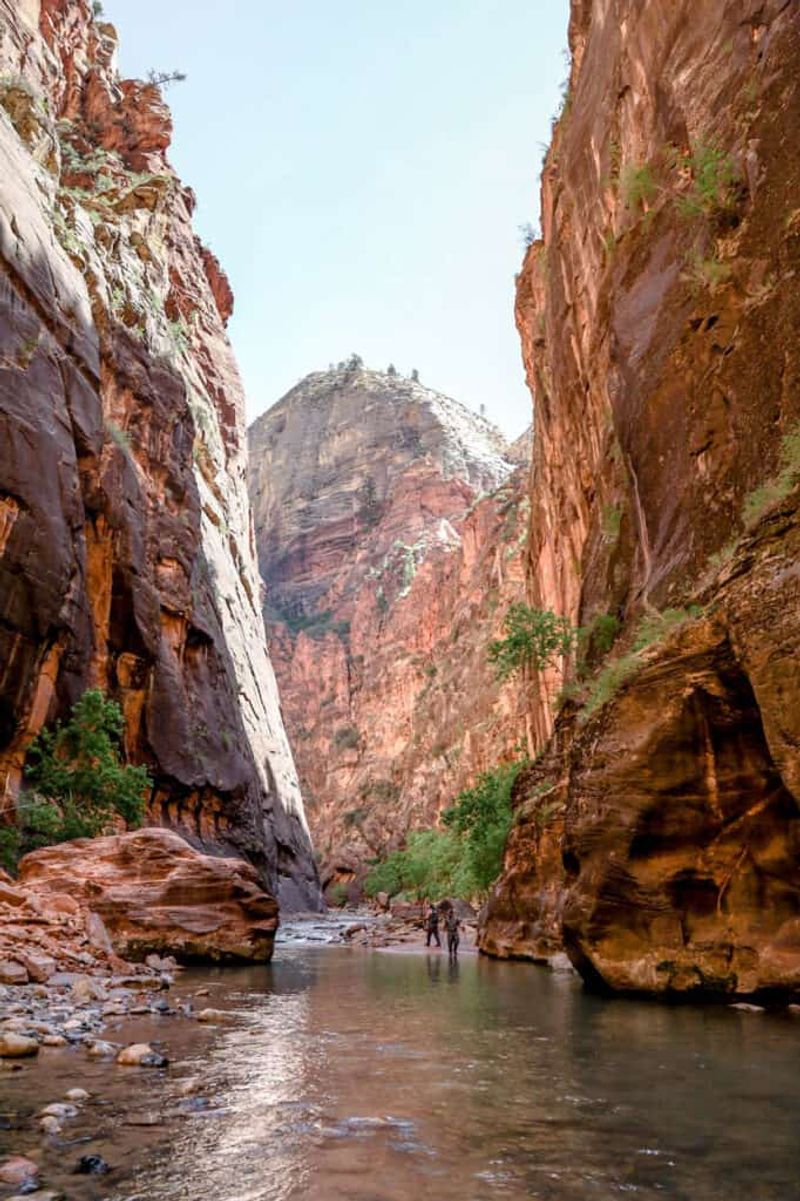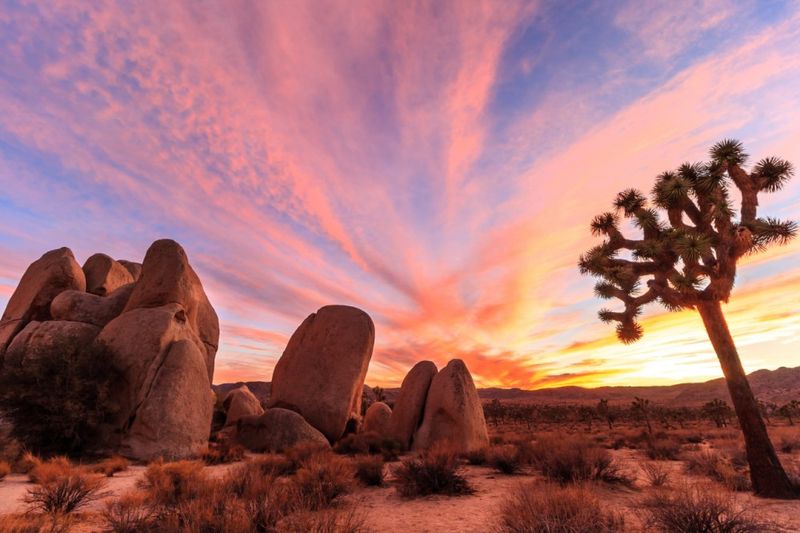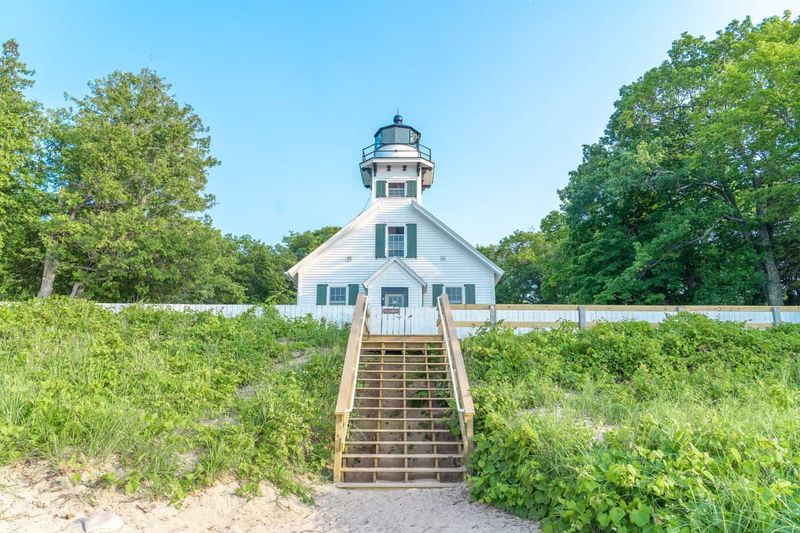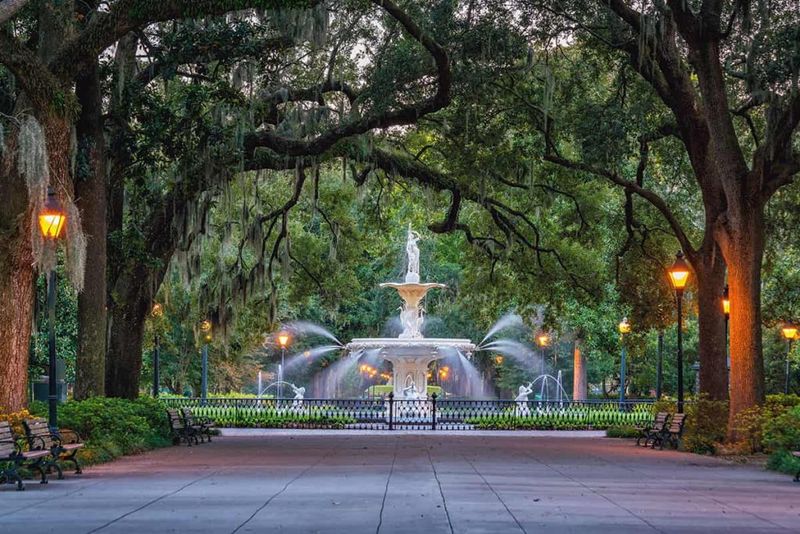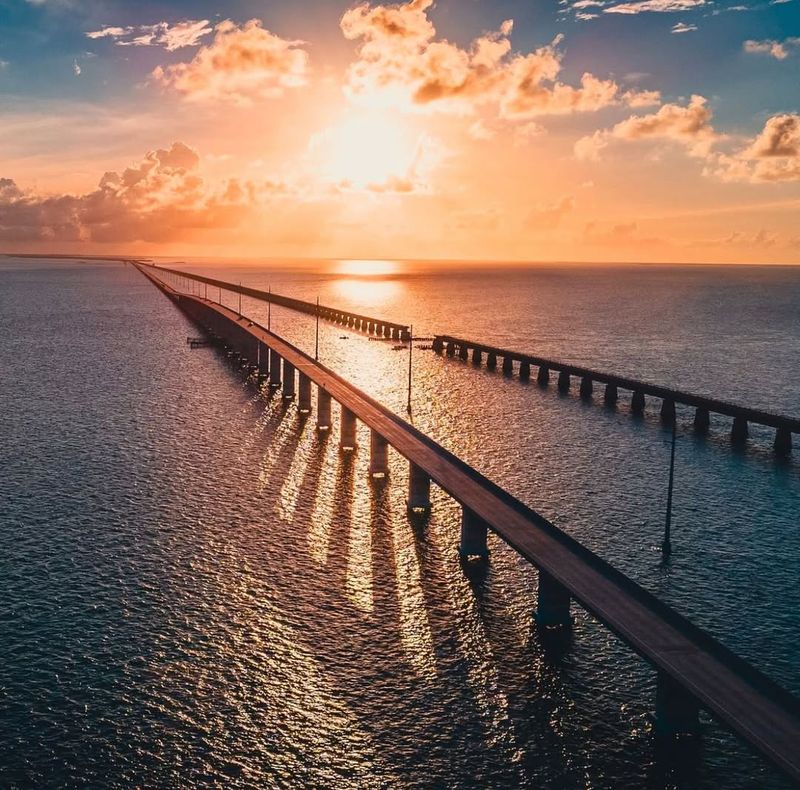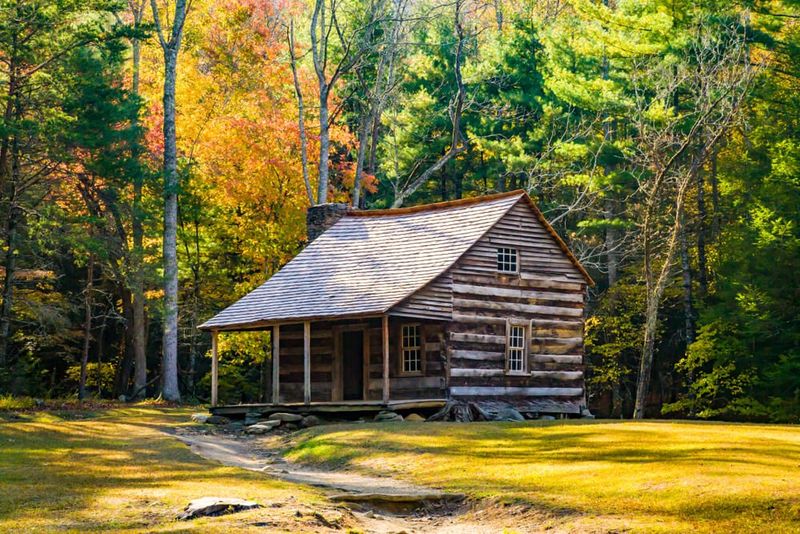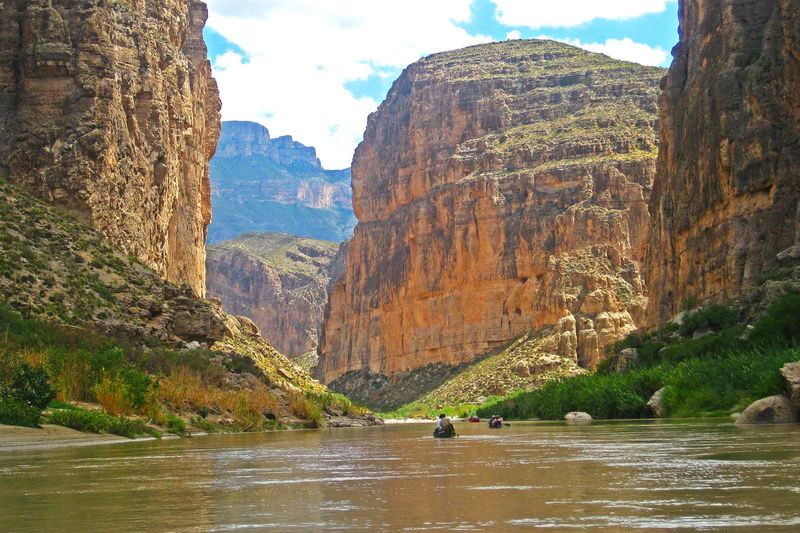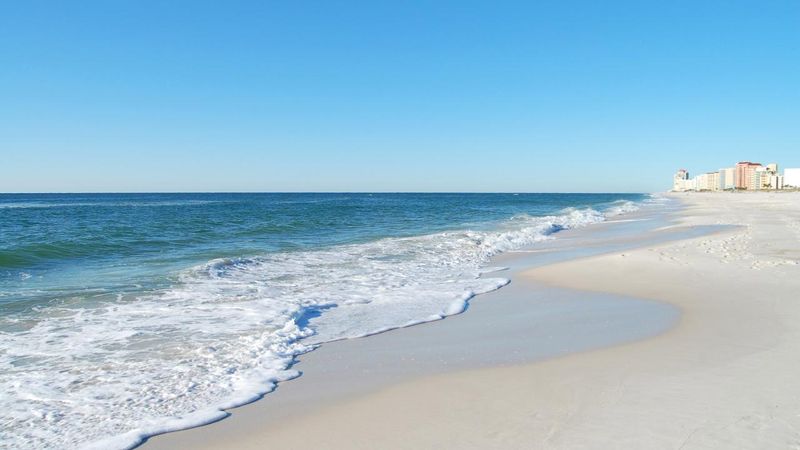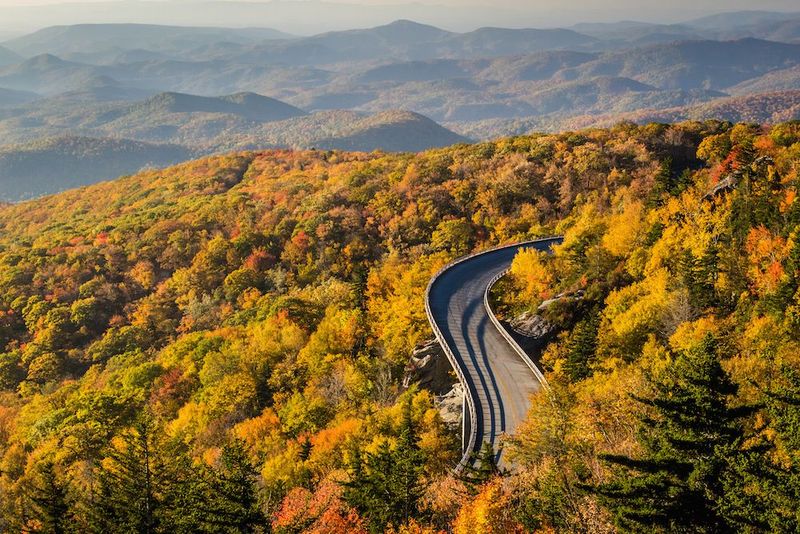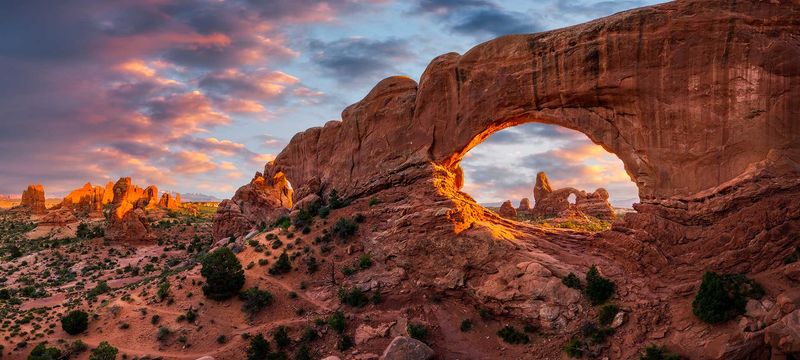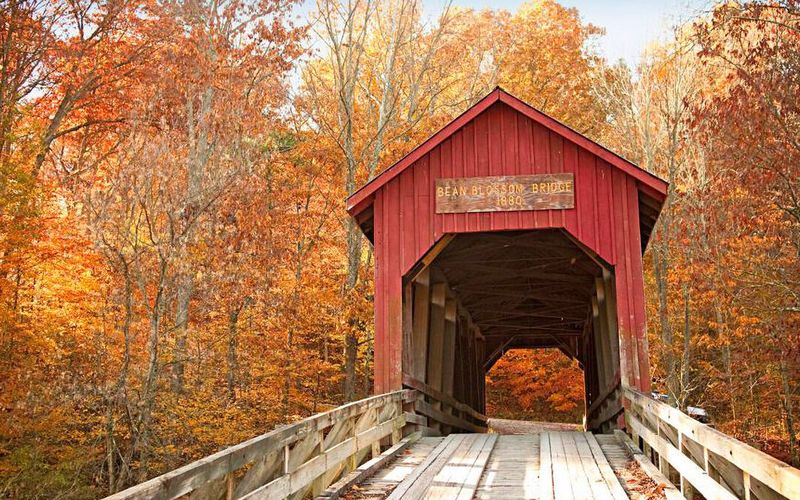Everyone needs a break from the hustle and bustle of city life, and a long weekend is the perfect opportunity to explore somewhere new without burning all your vacation days. Whether you crave mountain views, ocean breezes, or charming small towns, there’s an amazing destination just a few hours from your doorstep. This guide covers the best escapes from major cities across America, complete with distances, drive times, and day-by-day plans to help you make the most of every moment.
1. New York City to Hudson Valley (Storm King + River Towns)
Escape the concrete jungle for rolling hills dotted with world-class sculptures and riverside villages bursting with character. Storm King Art Center sits about two and a half hours north by car, or you can hop the Metro-North Hudson Line for a relaxing, car-free journey. Sprawling lawns and forest trails showcase monumental works by artists like Alexander Calder and Maya Lin.
Start your first day wandering Storm King’s 500 acres before heading to Beacon for dinner at one of its farm-to-table spots. Day two is all about nature: tackle the challenging Breakneck Ridge loop or the gentler Foundry Brook trail, then reward yourself with boutique shopping along Cold Spring’s Main Street. Wrap up your getaway with Sunday brunch in Hudson, where Warren Street’s antique shops and art galleries will tempt you to extend checkout just a little longer.
2. Los Angeles to Santa Barbara & Santa Ynez Wine Country
Trade LA traffic for a laid-back coastal vibe just 95 miles up the coast on US-101. Santa Barbara feels like a Mediterranean village transplanted to California, with white-washed buildings, red-tile roofs, and beaches that never get old. The Funk Zone neighborhood packs wine-tasting rooms, craft breweries, and street murals into a walkable waterfront district perfect for kicking off your escape.
Catch sunset at Butterfly Beach on day one, then spend your second day touring the vineyards of Santa Ynez and Los Olivos—book a shuttle so everyone can sip freely. Rolling hills carpeted in grapevines give way to tasting rooms pouring everything from crisp Chardonnays to bold Syrahs. On your final morning, brunch on State Street before visiting the historic Mission, where you can stroll through gardens and learn about California’s early Spanish heritage.
3. Chicago to Door County, Wisconsin (Lighthouses & Lakeshore)
Door County juts into Lake Michigan like a thumb, offering Midwesterners a quintessential escape filled with cherry orchards, historic lighthouses, and charming harbor towns. This peninsula becomes especially magical in fall when the maples ignite in reds and golds. Small-town hospitality meets natural beauty in a way that feels refreshingly unhurried.
Kick things off with a traditional fish boil in Fish Creek, where whitefish, potatoes, and onions simmer in massive outdoor kettles before being dramatically doused with kerosene to boil over—it’s equal parts dinner and show. Day two calls for biking the trails of Peninsula State Park and climbing Eagle Bluff Lighthouse for panoramic lake views. Before heading home on day three, explore Sturgeon Bay’s emerging coffee scene and browse the local galleries that showcase regional artists and craftspeople.
4. Washington, DC to Shenandoah National Park (Skyline Drive)
Skyline Drive runs 105 miles along the crest of the Blue Ridge Mountains, offering one overlook after another that’ll have you pulling over every few minutes. Spring brings wildflowers, summer offers lush green canopies, fall explodes in color, and winter reveals stark, beautiful vistas through bare branches. This national park sits close enough to the capital for a Friday afternoon departure.
Enter at Thornton Gap and work your way south to Big Meadows, stopping at overlooks that frame layer upon layer of mountains fading to blue. Dedicate day two to hiking—Old Rag’s rock scramble or Whiteoak Canyon’s waterfalls both demand early starts and sturdy boots. Your final morning can include brunch in the town of Luray, where you might detour into the famous caverns to see cathedral-sized rooms filled with stalactites. Always check the National Park Service website for seasonal road closures before you go.
5. Boston to Cape Cod (P’town or Sandwich Basecamp)
Cape Cod curls into the Atlantic like a flexed arm, sheltering beaches, dunes, and villages that have drawn summer crowds for generations. Depending on bridge traffic, you’re looking at anywhere from ninety minutes to two and a half hours to reach this sandy peninsula. Sandwich anchors the Cape’s shoulder with historic charm, while Provincetown commands the tip with art galleries, seafood shacks, and an unmistakable creative energy.
Start at Sandwich’s wooden boardwalk stretching over salt marsh, then bike the Cape Cod Canal path for waterfront views. Day two is all about the National Seashore’s pristine beaches and a dune tour from Provincetown that climbs towering sand hills. If you time it right, cap your trip with a whale-watching cruise or catch the seasonal ferry back to Boston, turning your return into part of the adventure itself.
6. San Francisco Bay Area to Monterey & Big Sur (North Section)
Highway 1 hugs the California coast in a white-knuckle dance between cliff and ocean, delivering some of the most jaw-dropping scenery in North America. Monterey serves as your gateway, blending world-class marine science with old fishing-village charm. Big Sur’s rugged coastline occasionally faces closures, so checking road conditions before you leave is essential—but even partial access delivers unforgettable views.
Spend day one at the Monterey Bay Aquarium watching jellyfish pulse and sea otters tumble, then wander Old Fisherman’s Wharf for clam chowder in a sourdough bowl. Day two takes you through Carmel’s storybook cottages to Point Lobos State Reserve, where trails wind past barking sea lions and tide pools teeming with life, before pushing south on Highway 1 as far as conditions allow. Wrap up with Sunday brunch in Carmel and a leisurely loop along the famous 17-Mile Drive.
7. Seattle to San Juan Islands (Friday Harbor or Orcas)
Boarding a Washington State Ferry in Anacortes feels like stepping into a slower, saltier world where orcas breach offshore and bald eagles patrol the skies. The San Juan archipelago scatters more than 170 islands across the Salish Sea, though most visitors stick to Lopez, Orcas, and San Juan Island. Vehicle reservations are a must during summer and holiday weekends, unless you prefer the walk-on passenger experience.
After the scenic crossing to Friday Harbor, rent a kayak or join a whale-watching tour to spot resident orca pods. Day two brings you to Lime Kiln Point State Park, one of the world’s best shore-based whale-watching spots, followed by farm stands selling lavender, cheese, and cider. If time allows, catch a day-trip ferry to Orcas Island and drive the winding road up Moran State Park to Mount Constitution’s stone tower, where 360-degree views reward your effort before the return ferry home.
8. Denver to Rocky Mountain National Park & Estes Park
Rocky Mountain National Park rises from the Front Range in a symphony of granite peaks, alpine meadows, and crystalline lakes that make you feel on top of the world—literally, since Trail Ridge Road climbs above 12,000 feet. Estes Park nestles at the park’s eastern entrance, offering mountain-town amenities and easy access to trailheads. Timed-entry permits control summer crowds, so reserve yours well ahead or arrive before dawn.
Ease into mountain time with a stroll along Estes Park’s riverwalk and sunset photos at Sprague Lake, where still waters mirror the Continental Divide. Day two demands an early alarm: parking at Bear Lake trailhead fills by 7 a.m., but those who beat the rush enjoy trails winding past Dream Lake and Emerald Lake with relatively few companions. Your final morning can include a drive along Trail Ridge Road—open roughly late May through mid-October—stopping at overlooks before a farewell coffee in town.
9. Phoenix to Sedona (Red Rocks & Vortex Views)
Sedona’s crimson sandstone spires glow like embers against impossibly blue skies, drawing artists, hikers, and spiritual seekers to a landscape that feels almost otherworldly. The two-hour drive north from Phoenix climbs out of the Sonoran Desert into high-desert canyon country where every turn reveals another postcard vista. Whether you believe in vortex energy or just appreciate stunning geology, this town delivers magic.
Start at the Chapel of the Holy Cross, a modernist chapel built into the rock face, then browse Tlaquepaque’s Spanish-colonial-style shopping plaza. Rise early on day two for sunrise at Bell Rock—the light transforms the stone from rust to rose to blazing orange—then cool off at Crescent Moon Picnic Area along Oak Creek. Day three offers a choice: splash in Slide Rock State Park’s natural water slides if it’s warm, or sip wine at Page Springs vineyards if you prefer a mellower pace.
10. Dallas to Broken Bow, Oklahoma (Beavers Bend State Park)
Broken Bow feels like a secret the rest of Texas hasn’t quite caught onto yet—a forested wonderland of clear lakes, pine-shaded trails, and cozy cabins that rivals anything in the Ozarks. Beavers Bend State Park anchors the area with hiking, fishing, and paddling opportunities that make you forget you’re still in the South Central United States. The Mountain Fork River runs cold and clean, perfect for trout fishing or a lazy float.
Check into your cabin on day one and spend the evening unwinding on the deck with nothing but cicada songs for entertainment. Day two is all about the lake: hike the David Boren Hiking Trail for ridge views, then claim a beach spot on Broken Bow Lake’s turquoise water—some nearby areas allow ATV riding, but check local regulations first. Wrap up your escape with a morning paddle on the Mountain Fork River, where overhanging trees create a green tunnel and the current does most of the work.
11. Houston to Fredericksburg & Texas Hill Country
Fredericksburg blends German heritage with Lone Star pride in a Hill Country town where you can sample schnitzel for lunch and Texas brisket for dinner without anyone batting an eye. The drive takes anywhere from four to six hours depending on your route, but the journey through rolling hills dotted with wildflowers (especially in spring) is half the fun. Wineries have multiplied like bluebonnets in recent years, making this a proper wine destination.
Spend your first afternoon strolling Main Street’s shops and bakeries, then settle into a beer garden for authentic German fare and live polka music. Day two is for the US-290 Wine Trail, where tasting rooms like Reddy Vineyards pour estate-grown varietals in settings that range from rustic barns to modern pavilions. Wake early on day three for the sunrise hike up Enchanted Rock, a massive pink granite dome that rewards your scramble with views stretching across the Hill Country all the way to the horizon.
12. Philadelphia to Pocono Mountains (Waterfalls & Woods)
The Poconos have been the mid-Atlantic’s playground for generations, offering forested ridges, cascading waterfalls, and small-town charm just a couple of hours north of Philly. Jim Thorpe anchors the southern edge with Victorian architecture and outdoor adventure, while Bushkill Falls—dubbed the “Niagara of Pennsylvania”—provides a network of boardwalks connecting eight waterfalls. Lake Wallenpaupack adds a water-sports dimension to this mountain escape.
Day one takes you to Jim Thorpe for a scenic train ride through Lehigh Gorge or a bike ride along the old railroad grade that hugs the river. Dedicate day two to Bushkill Falls, where wooden walkways wind through hemlock forest past Main Falls and six other cascades—wear sturdy shoes since the trails can be steep and slippery. On your way home, pack a picnic for Lake Wallenpaupack’s shoreline, where you can stretch your legs and watch sailboats glide across Pennsylvania’s third-largest lake before rejoining the highway south.
13. Minneapolis–St. Paul to Duluth & the North Shore
Lake Superior’s North Shore unfolds like a greatest-hits reel of Midwest natural beauty: waterfalls tumbling over basalt cliffs, lighthouses standing sentinel over the world’s largest freshwater lake, and forests that blaze orange and gold each autumn. Duluth sits about two and a quarter hours north on I-35, serving as your base camp for exploring the scenic highway that ribbons northeast along the shore. Canal Park’s brick streets and maritime museums provide urban polish before you head into wilder territory.
Start at Canal Park to watch massive freighters glide beneath the Aerial Lift Bridge—ship schedules are posted online if you want to time your visit. Day two is all about the waterfalls: Gooseberry Falls State Park offers five cascades and easy trails, while Split Rock Lighthouse perches dramatically on a cliff 130 feet above the lake. On your final morning, grab coffee in Two Harbors and take a shoreline walk before pointing south toward home.
14. Portland, Oregon to Cannon Beach & Ecola State Park
Cannon Beach’s iconic Haystack Rock rises 235 feet from the sand like a cathedral built by the Pacific itself, surrounded by tide pools teeming with starfish, anemones, and hermit crabs. Just eighty miles west of Portland via US-26, this coastal gem delivers big scenery without the big drive. Ecola State Park crowns the headlands to the north, where trails through old-growth Sitka spruce forest lead to viewpoints that’ll make your Instagram followers weep with envy.
Arrive in time for sunset on day one, when golden light turns Haystack Rock into a silhouette and the beach stretches empty in both directions. Day two calls for the Indian Beach Trail in Ecola State Park—a moderate hike that rewards you with jaw-dropping coastal panoramas and possibly a glimpse of migrating gray whales. Spend your final morning strolling Seaside’s beachfront promenade or exploring Arch Cape’s tide pools at low tide, timing your departure to avoid weekend traffic back to the city.
15. Las Vegas to Zion National Park (Springdale Base)
Zion’s towering sandstone cliffs striped in cream, pink, and crimson make the slot canyons and desert mesas around Vegas look like warm-up acts. The drive northeast on I-15 covers about 160 miles in two and a half to three hours, delivering you to the gateway town of Springdale and one of America’s most beloved national parks. Shuttle buses ferry visitors up Zion Canyon during peak season, turning your car keys into a distant memory.
Take it easy on day one with the paved Pa’rus Trail along the Virgin River, then enjoy dinner at one of Springdale’s excellent restaurants with patio views of the canyon walls glowing in evening light. Day two is for the big hike: choose the flat Riverside Walk to the Narrows entrance, the moderate Emerald Pools, or tackle Angels Landing if you’ve secured a permit and have a head for heights. Before heading back to the neon lights, detour to Kolob Canyons for a less-crowded perspective on Zion’s geology and a final dose of red-rock wonder.
16. San Diego to Joshua Tree National Park
Joshua Tree’s alien landscape of twisted yucca trees and jumbled granite boulders feels like stepping onto another planet—one where rock climbers scramble up sun-warmed stone and stargazers lose themselves in Milky Way views unpolluted by city lights. The three-hour drive from San Diego takes you from Pacific beaches into high desert, where two distinct ecosystems meet and mingle. Spring brings wildflower blooms that carpet the desert floor in unexpected color.
Start at Hidden Valley’s one-mile loop trail, where a natural rock amphitheater once corralled cattle rustlers’ stolen herds, then drive to Keys View for sunset over the Coachella Valley and San Andreas Fault. Day two is for deeper exploration: Barker Dam’s easy walk leads to a historic water tank and possible bighorn sheep sightings, while Cholla Cactus Garden glows golden in afternoon light. After a night of stargazing, wrap up with brunch in Joshua Tree town and vintage treasure hunting in Yucca Valley’s quirky shops.
17. Detroit to Traverse City & Old Mission Peninsula
Traverse City sits at the bottom of Grand Traverse Bay like a jewel in Michigan’s crown, offering sandy beaches, cherry orchards, and a burgeoning wine scene that’s put the region on foodie maps. The four to four-and-a-half-hour drive north takes you from Motor City to a place where the pace slows and the air smells like pine and fresh water. Old Mission Peninsula divides the bay, creating a microclimate perfect for growing Rieslings and Pinot Noirs that rival anything from the coasts.
Start with Clinch Park Beach and an evening stroll down Front Street, where galleries, boutiques, and farm-to-table restaurants line the brick sidewalks. Day two is for the peninsula: visit the 1870 lighthouse at the tip, then work your way back down the spine stopping at tasting rooms with bay views. If you have time on day three, the Sleeping Bear Dunes National Lakeshore lies just west—even a quick drive along Pierce Stocking Scenic Drive delivers stunning overlooks of Lake Michigan’s turquoise waters and massive sand dunes.
18. Atlanta to Savannah (Historic Squares & River Street)
Savannah drips with Southern charm—literally, thanks to the Spanish moss cascading from centuries-old live oaks that shade 22 historic squares. The four-hour drive southeast from Atlanta delivers you to a city where horse-drawn carriages clip-clop past antebellum mansions and riverfront warehouses have been reborn as shops and seafood restaurants. Every corner reveals another photo opportunity, from ornate iron balconies to hidden garden courtyards.
Spend your first afternoon wandering Forsyth Park and the surrounding Victorian District, then head to River Street for sunset over the Savannah River and dinner at a restaurant serving Lowcountry classics like shrimp and grits. Day two calls for a guided walking tour through the Historic District—ghost tours are popular after dark if you’re into spooky stories. On your final morning, visit Bonaventure Cemetery’s hauntingly beautiful grounds or take a quick drive to Tybee Island for beach time before the return drive north.
19. Miami to Key West (Overseas Highway Island Hopping)
The Overseas Highway strings together a necklace of coral islands connected by 42 bridges, with the Atlantic on one side and the Gulf of Mexico on the other. Key West sits 160 miles southwest of Miami—about three and a half hours if you drive straight through, but you’d be crazy not to stop for conch fritters, snorkeling, and photo ops along the way. This drive ranks among America’s most scenic road trips, especially when the water glows in shades of blue and green you didn’t know existed.
Break up the drive with stops at John Pennekamp Coral Reef State Park in Key Largo for glass-bottom boat tours and Bahia Honda State Park for some of the Keys’ best beaches. Once you reach Key West, spend your afternoon at Mallory Square watching street performers and sunset, then explore Duval Street’s bars and restaurants. Day three is for Hemingway House’s six-toed cats, Fort Zachary Taylor’s snorkeling, and one last key lime pie before heading back up the island chain.
20. Nashville to Great Smoky Mountains (Gatlinburg or Cades Cove Base)
The Smokies earn their name from the blue-gray mist that hovers over ancient peaks each morning, creating an atmosphere that’s equal parts mystical and majestic. America’s most-visited national park sits about three and a half hours east of Nashville, offering more than 800 miles of trails, historic cabins, and wildlife that includes black bears and synchronous fireflies. Gatlinburg provides touristy amenities at the park’s edge, while Cades Cove offers a quieter, more rustic base.
Enter through Gatlinburg and drive Newfound Gap Road, stopping at overlooks that frame ridge after ridge fading into the distance. Day two is for Cades Cove’s 11-mile loop road, where historic churches and barns dot a broad valley and white-tailed deer graze in early morning light—arrive before 10 a.m. or rent a bike on Wednesday or Saturday mornings when the loop is closed to cars. Spend your final morning hiking to one of the park’s many waterfalls before pointing west toward Music City.
21. Austin to Big Bend National Park (Chisos Basin)
Big Bend occupies one of the most remote corners of Texas, where the Rio Grande carves dramatic canyons and the Chisos Mountains rise like an island from the Chihuahuan Desert. The seven-hour drive from Austin is an adventure in itself, passing through tiny towns and increasingly empty landscapes until you reach a park larger than Rhode Island. Cell service vanishes, light pollution disappears, and you remember what true wilderness feels like.
Base yourself in Chisos Basin, where the park’s only lodge sits surrounded by mountains and trails. Day two should start early for the Window Trail, a moderate hike that ends at a rocky pour-off with views across the desert, or tackle the more challenging South Rim if you’re up for an all-day adventure. Spend your final day exploring Santa Elena Canyon, where sheer rock walls rise 1,500 feet on either side of the river, before beginning the long but rewarding drive back to civilization.
22. New Orleans to Gulf Shores, Alabama (White Sand Beaches)
Gulf Shores’ sugar-white quartz sand squeaks beneath your feet and stays cool even under the blazing sun, thanks to its unique composition. This stretch of Alabama coastline sits about two and a half hours east of New Orleans, offering family-friendly beaches without the spring-break chaos of neighboring Florida. The Gulf’s warm, gentle waves make it perfect for swimming, paddleboarding, and just floating the afternoon away.
Check into a beachfront condo or hotel on day one and spend the afternoon doing absolutely nothing but working on your tan and listening to waves. Day two can include a dolphin cruise, kayaking through Bon Secour National Wildlife Refuge’s back bays, or tackling the Hugh S. Branyon Backcountry Trail system that winds through six different ecosystems. Before heading back to the Big Easy, grab breakfast at a local seafood spot—the Gulf shrimp here are ridiculously fresh—and take one last beach walk to collect shells and breathe in the salt air.
23. Charlotte to Asheville & Blue Ridge Parkway
Asheville has evolved from sleepy mountain town to craft-beer-and-farm-to-table mecca without losing its artsy, laid-back soul. The two-hour drive west from Charlotte climbs into the Blue Ridge Mountains, where the Parkway offers America’s favorite scenic drive and the French Broad River cuts through downtown. Historic Biltmore Estate, funky galleries, and more breweries per capita than almost anywhere else make this a weekend destination with serious range.
Spend day one exploring downtown’s independent bookstores, craft shops, and the River Arts District, where working artists open their studios to visitors. Day two is for Biltmore Estate—George Vanderbilt’s 250-room château demands at least half a day—or drive a section of the Blue Ridge Parkway for mountain overlooks and short hikes to waterfalls. On your final morning, grab brunch at a farm-to-table spot, then hit one more brewery or the Asheville Botanical Gardens before heading back to the Queen City.
24. Salt Lake City to Moab (Arches & Canyonlands)
Moab serves as the adventure capital of Utah’s red rock country, bracketed by two stunning national parks that showcase nature’s most creative stonework. The four-hour drive southeast from Salt Lake City trades urban grid for slickrock domes, balanced rocks, and arches that seem to defy gravity. Mountain bikers worship Moab’s world-class trails, while hikers and photographers come for landscapes that look Photoshopped even in person.
Start with Arches National Park on day one, arriving early to beat crowds at Delicate Arch—Utah’s most iconic landmark—or opt for the easier Windows Section if you prefer shorter walks. Day two belongs to Canyonlands’ Island in the Sky district, where Mesa Arch frames sunrise perfectly and Grand View Point delivers exactly what its name promises. Wrap up your weekend with a morning float down the Colorado River or a mountain bike ride on the Slickrock Trail before pointing north toward home, already planning your next visit.
25. Indianapolis to Brown County State Park (Fall Foliage & Art Galleries)
Brown County explodes in color each fall, earning its nickname as the “Little Smokies” when maples, oaks, and hickories paint the hills in every shade of red, orange, and gold. Just an hour south of Indianapolis, this region combines Indiana’s largest state park with the artsy town of Nashville—not Tennessee’s Music City, but a charming village where galleries and craft shops outnumber gas stations. Covered bridges, country stores, and winding roads complete the picture-perfect autumn escape.
Spend your first afternoon driving the park’s scenic roads and climbing the fire tower for panoramic views, then head into Nashville for dinner and gallery browsing. Day two is for hiking: the Ogle Lake Trail offers moderate terrain and water views, while the more challenging trails climb ridges for even better foliage vistas. Before leaving on day three, hit the Nashville farmers market for homemade jams and local crafts, then grab lunch at the Nashville House for their famous fried biscuits and apple butter.
